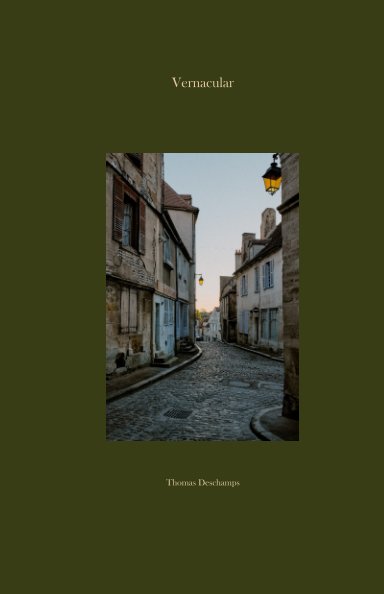Über das Buch
I am a city dweller who aspires to leave the city behind him, its noises and perpetual agitation: this book shows the dream life of a Parisian in search of calm and solitude, in an idealized vision of the countryside, in search of a lost paradise. It also allows me to prove that exoticism and change of scenery do not necessarily mean a long trip to the antipodes, and that we can just search nearby places to have the feeling of a distant trip.
I have always dreamed of an isolated house surrounded by fields, like an island lost amidst the wheat, which is reached by a small dead-end road. I had found this ideal home a few years ago but I gave up buying it because it was too far from Paris.
Ever since I became interested in photography in a serious way, a book has changed my way of photographing: “La France de Raymond Depardon”, this tour de France of the sub-prefectures, as he defines himself. His photographs inspire me, transport me and they illustrate my passion for the vernacular.
The vernacular architecture is defined in French as an architecture conceived in harmony with its environment, in relation with the geographical area which is specific to it, its soil and its inhabitants. But I prefer the definition given by the Anglo-Saxons: it is an architecture more concerned with the domestic and functional than the public or the monumental.
It is finally an architecture without architects, which consists of buildings for domestic use, enlarged over time, as needed. It is an architecture that has not been conceived, planned, organized and it is what makes it so rich: the vernacular building is the essential component of the ancient villages that dot our territory and I appreciate to visit above all else.
I like to photograph places where the walls are not straight, and the houses lean under the weight of years: the stones of the facades have so many stories to tell. This book is an ode to this anonymous architecture, sculpted by the time and the hand of anonymous men.
I have always dreamed of an isolated house surrounded by fields, like an island lost amidst the wheat, which is reached by a small dead-end road. I had found this ideal home a few years ago but I gave up buying it because it was too far from Paris.
Ever since I became interested in photography in a serious way, a book has changed my way of photographing: “La France de Raymond Depardon”, this tour de France of the sub-prefectures, as he defines himself. His photographs inspire me, transport me and they illustrate my passion for the vernacular.
The vernacular architecture is defined in French as an architecture conceived in harmony with its environment, in relation with the geographical area which is specific to it, its soil and its inhabitants. But I prefer the definition given by the Anglo-Saxons: it is an architecture more concerned with the domestic and functional than the public or the monumental.
It is finally an architecture without architects, which consists of buildings for domestic use, enlarged over time, as needed. It is an architecture that has not been conceived, planned, organized and it is what makes it so rich: the vernacular building is the essential component of the ancient villages that dot our territory and I appreciate to visit above all else.
I like to photograph places where the walls are not straight, and the houses lean under the weight of years: the stones of the facades have so many stories to tell. This book is an ode to this anonymous architecture, sculpted by the time and the hand of anonymous men.
Autorenwebsite
Eigenschaften und Details
- Hauptkategorie: Kunst & Fotografie
- Weitere Kategorien Kunstfotografie
-
Projektoption: 13×20 cm
Seitenanzahl: 96 -
ISBN
- Bedrucktes Hardcover: 9781715115203
- Veröffentlichungsdatum: Juni 26, 2020
- Sprache English
- Schlüsselwörter countryside, photography, vernacular
Mehr anzeigen


